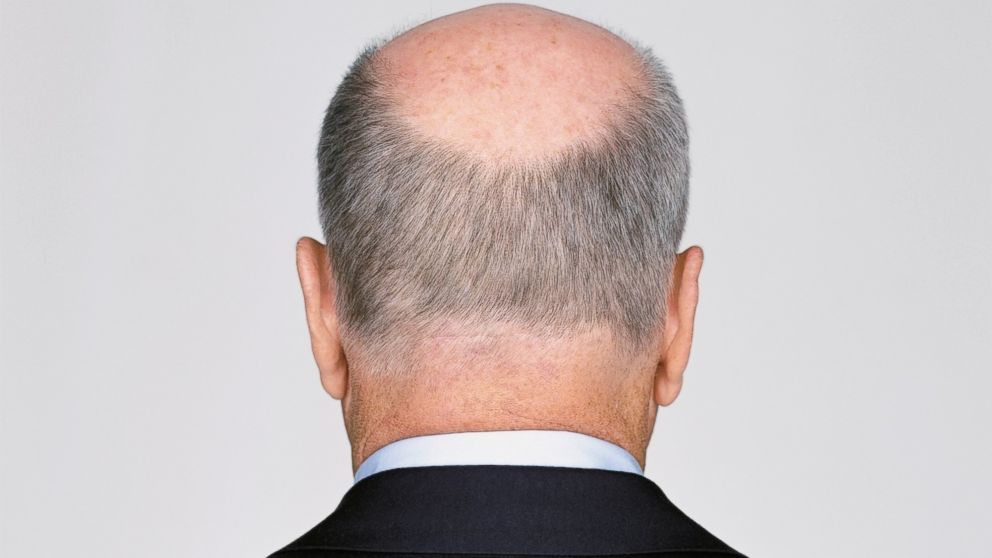Hats Off to These 4 Potential Baldness Cures
By age 50, approximately 85 percent of men have significantly thinning hair.

Oct. 22, 2013— -- intro: By the age of 35, two-thirds of American men experience some degree of measurable hair loss, and by the age of 50, approximately 85 percent have significantly thinning hair, according to the American Hair Loss Association.
Given those numbers, finding a cure for baldness has become the holy grail among scientists everywhere.
There are a few hair restoration treatments currently approved by the U.S. Food and Drug Administration, but none have exactly hit home runs. Here's a rundown of four follicular breakthroughs that show some promise.
READ MORE: Shining A Light On Hair Loss Treatments
quicklist: 1category: Hats Off to These 4 Potential Baldness Curestitle: 3-D Spheroidsurl:text: Researchers from Columbia University Medical Center and University of Durham in England recently announced an experiment they said could inch humanity one step closer to a cure for the receding hairline.
Coaxing new hair growth in humans can be tricky. Methods that work in animal studies often produce barren patches of skin when tried on people. Lead researcher Dr. Angela Christiano said her team plucked a few hairs from the heads of seven subjects, cultured them in a dish, then turned them over so they would clump together in "3-D spheroids" to "maintain their hair identity." The team then grafted the clumps of hair onto mice.
In five of the cases, the clumps kick-started the cell's ability to grow hair. Christiano said this was the first time scientists had been able to cultivate hair entirely from human cells.
If the method makes it to clinical trials, Christiano said she believes it could transform hair-loss treatments. But the study was small, and researchers haven't yet perfected the crucial step of repatriating hair back onto the human scalp.
READ MORE: A Cure for Baldness in the Next 10 Years?
quicklist: 2category: Hats Off to These 4 Potential Baldness Curestitle: Stress-Buster Compoundsurl:text: In 2011, researchers at the University of California, Los Angeles stumbled upon a promising cure for baldness while studying the gut function of mice that had lost their hair due to an increase of the stress hormone corticotropin-releasing factor, or CRF. When they injected a compound that blocked CRF, the mice grew thick, luxurious coats in five days.
The drug seemed to awaken dormant follicles and initiate a growth phase. It restored pigment too, which means it could also reverse graying.
While the accidental treatment was effective for growing fur in mice, that's no guarantee it will work on human locks. Drugs that cure animal baldness are often a bust for humans. Clinical trials are still a long way off.
quicklist: 3category: Hats Off to These 4 Potential Baldness Curestitle: Latisseurl:text: The cure for baldness might be right before our eyes.
The active ingredient in Latisse -- bimatoprost -- was originally used to treat glaucoma when researchers noticed that those who used Latisse grew thick, luxurious eyelashes. The FDA soon approved it for that purpose.
Last year British researchers set up three experiments to see if bimatoprost might also work for repopulating pates.
One test cultured hair follicles from organ cells in a dish while another cultured cells taken directly from a human scalp. In the third experiment, bimatoprost was applied directly to balding mice. In all three cases, the drug caused human hair to regrow.
While the development was viewed as promising, the drug will have to jump through quite a few more hoops for the FDA to expand its use beyond lashes.
quicklist: 4category: Hats Off to These 4 Potential Baldness Curestitle: Fat Cellsurl:text: In a recent study, Yale University researchers may have unlocked one of the mysteries as to how locks grow and shed.
The researchers observed that when hair dies, a layer of fat in the scalp that comprises most of the skin's thickness shrinks. But in the absence of these fat cells hair refuses to grow. This could be because the fat layer produces molecules called PDGF -- platelet derived growth factors -- which are necessary for hair growth.
Though this discovery seems to be good news for balding rodents, it doesn't mean much for hair-challenged humans just yet. Once again, the usefulness of these results will become more apparent as research progresses. Even if the information proves promising, it won't address hair loss caused by the shifts in hormones associated with male-pattern baldness.




